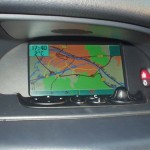 Maps have been tapping into insights from the crowd for a little while now. Collaborate.org is one of the more adventurous attempts. The project, which was launched at the Future in Review conference last year aims to bring geospatial data to the masses via over 2 million different data layers that can be overlaid on top of maps.
Maps have been tapping into insights from the crowd for a little while now. Collaborate.org is one of the more adventurous attempts. The project, which was launched at the Future in Review conference last year aims to bring geospatial data to the masses via over 2 million different data layers that can be overlaid on top of maps.
“We want to harness the collective knowledge of the online global community, sharing expertise and enthusiasm,” said company CEO Kevin Montgomery. “We are providing worldwide geospatial infrastructure to empower people.”
The site is built upon World Wind, an open source platform developed by NASA. It’s kinda like Google Earth but on an open source platform that allows users to develop and interact with it.
A more recent endeavour in engaging the crowd with improving mapping has emerged from Yahoo Labs in Barcelona, where they are aiming to improve the GPS capabilities of modern routing applications. Whilst such applications are often capable of showing you the quickest route from A to B, with many taking into account live traffic conditions, few are able to take scenery or beauty into account.
That inspired researchers at the lab to enroll the crowd in the production of something altogether better. Unlike many crowdsourced mapping projects however, the researchers weren’t turning directly to users to inform them of scenic diversions, but rather they were trawling through around 5 million photos from sites such as Flickr and Foursquare to gauge areas that people found interesting and enjoyable. They used this information to then determine possible diversions that motorists could find more enjoyable, even if a little slower.
This initial analysis allowed the researchers to compile a number of recommendations, which were then rated by people for their perceived quality as an alternative route. In general, participants preferred routes that were prettier on the eye, whilst adding on average 12% to the journey time.
The aim is to scale up the process now and try it out in a few more cities. Of course, using it in a city in the first place may make finding a ‘scenic’ route somewhat challenging, but everything has to start somewhere, and hopefully this will get us on the road to more enlightened mapping.